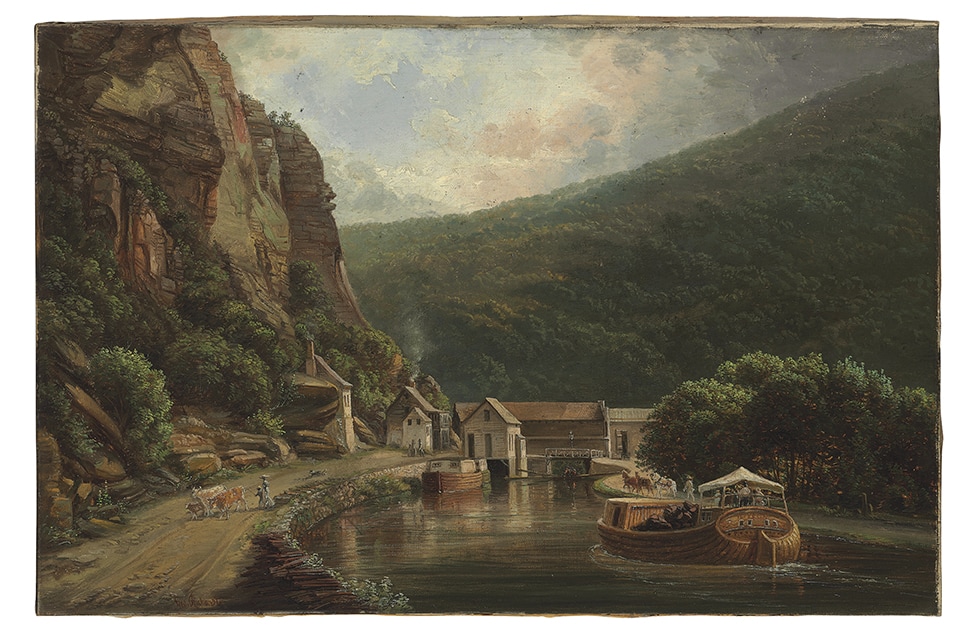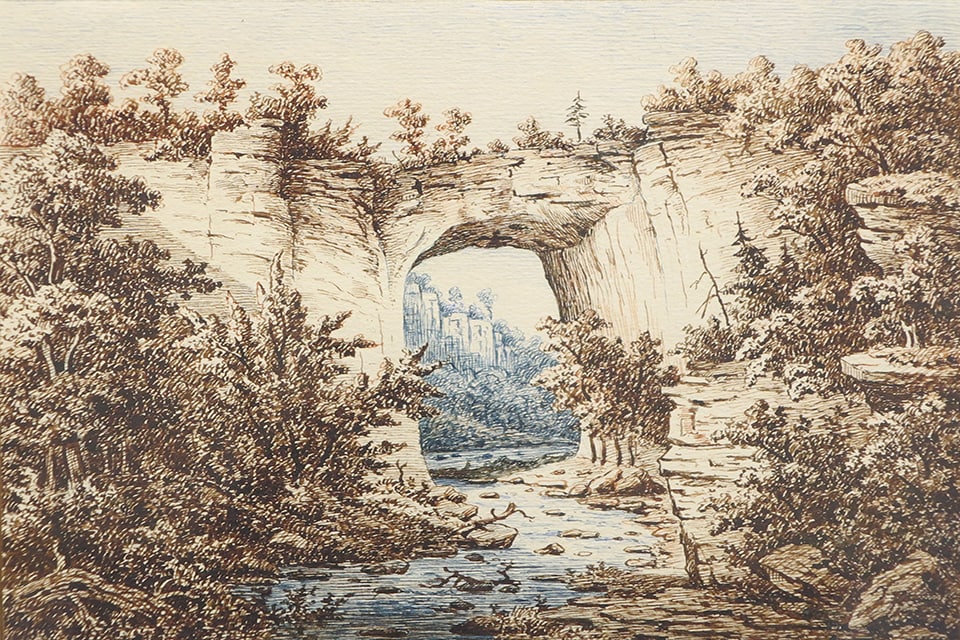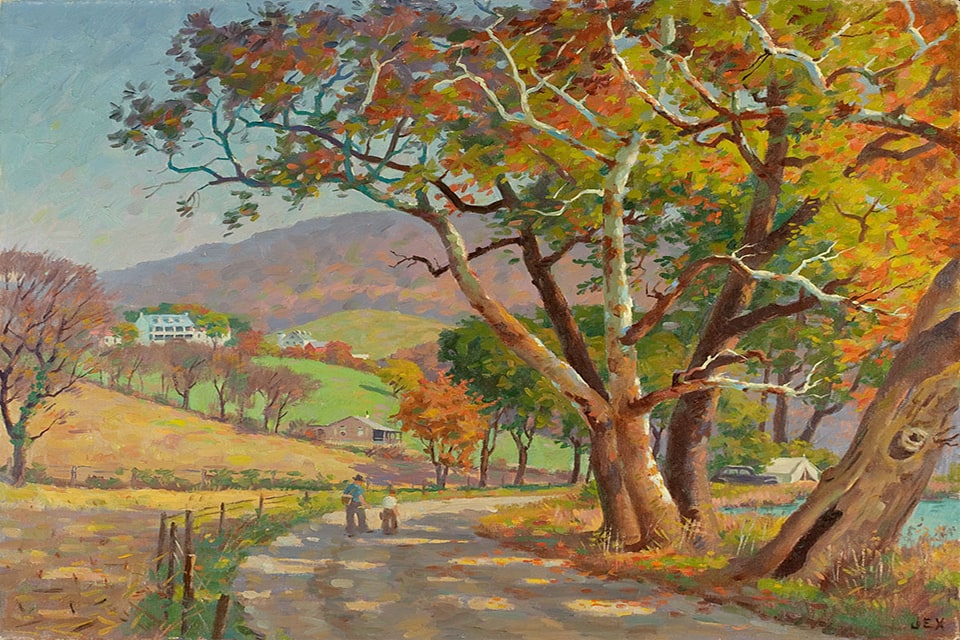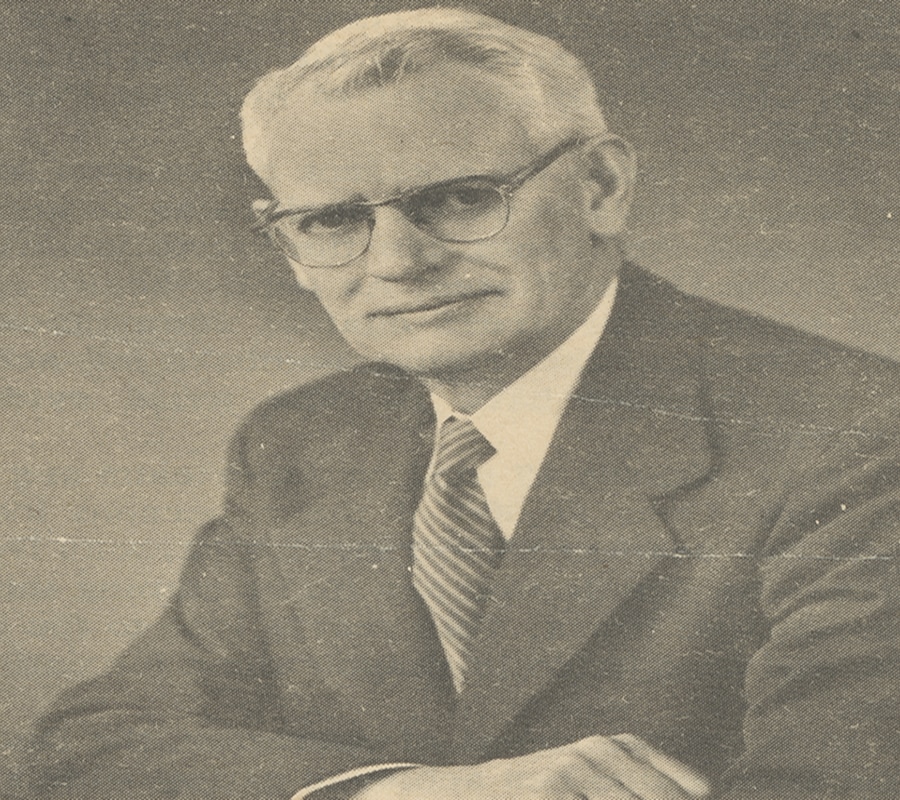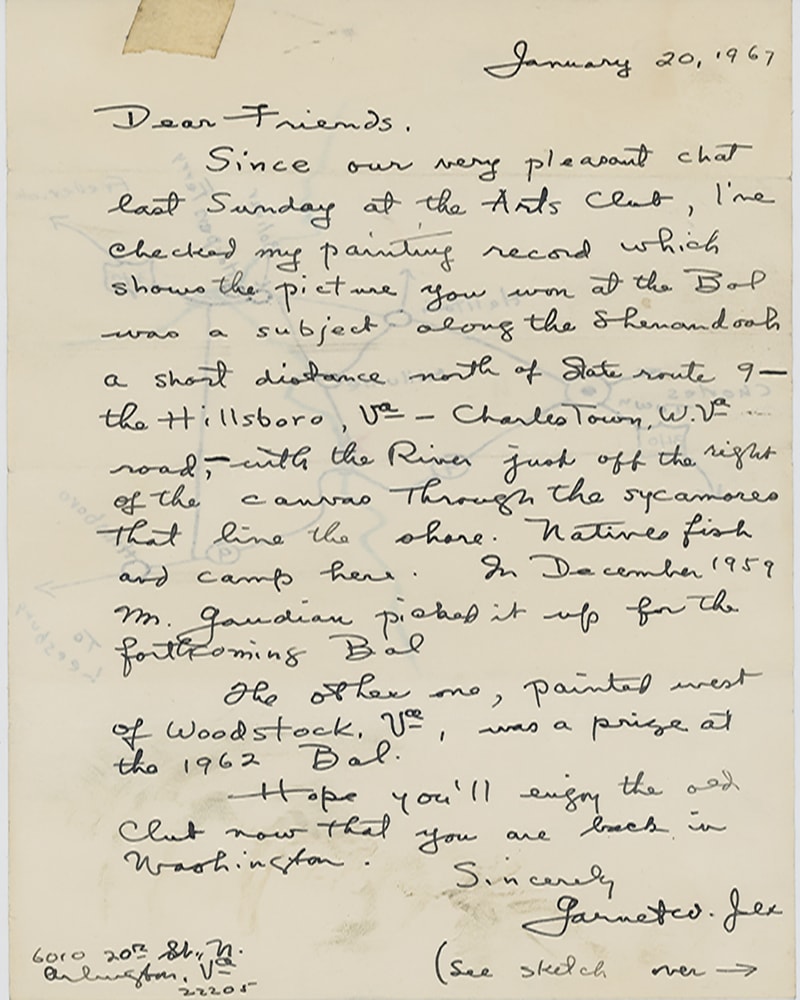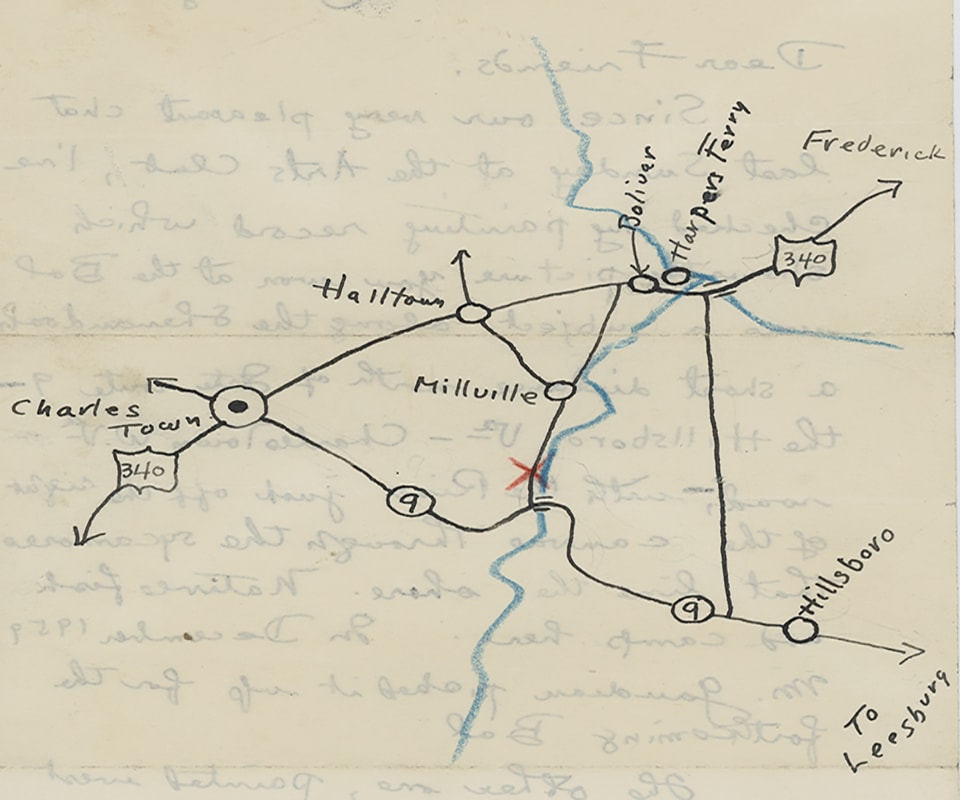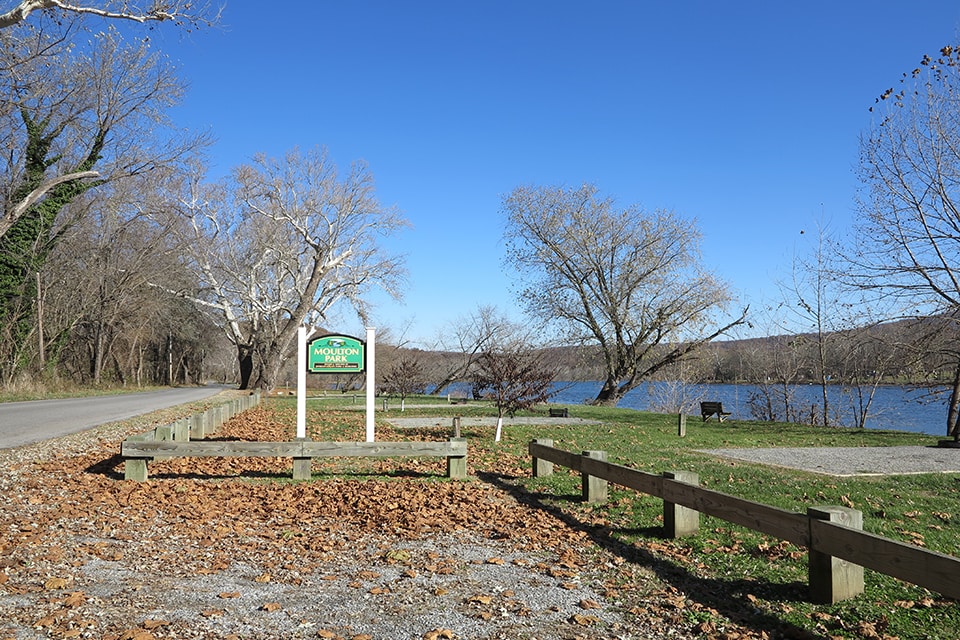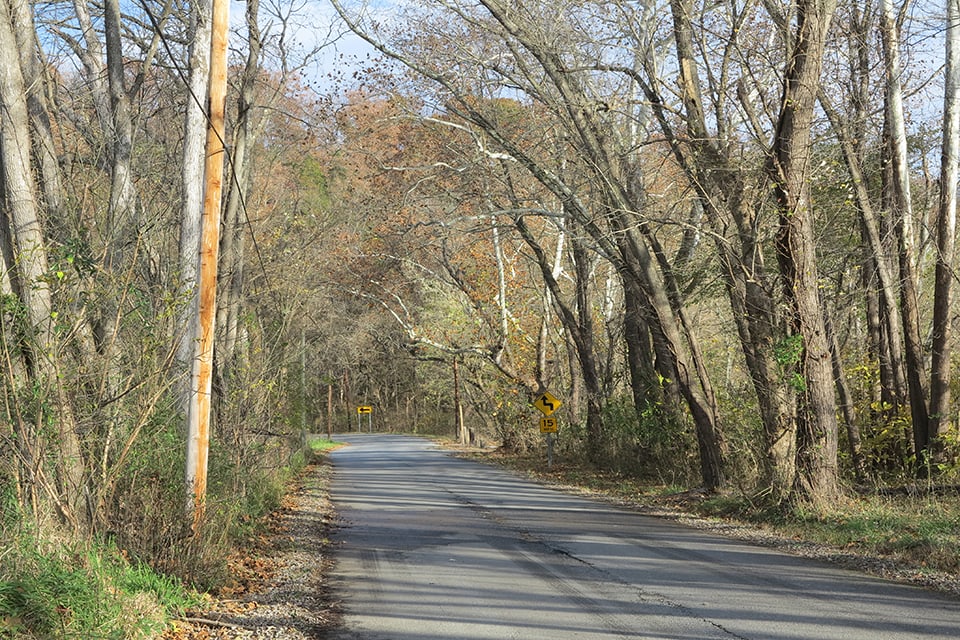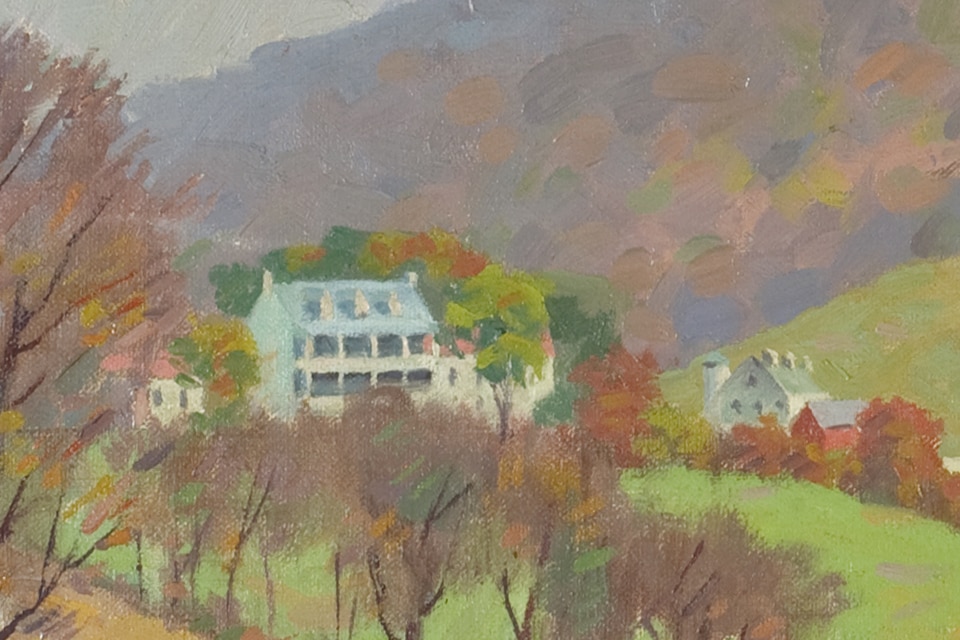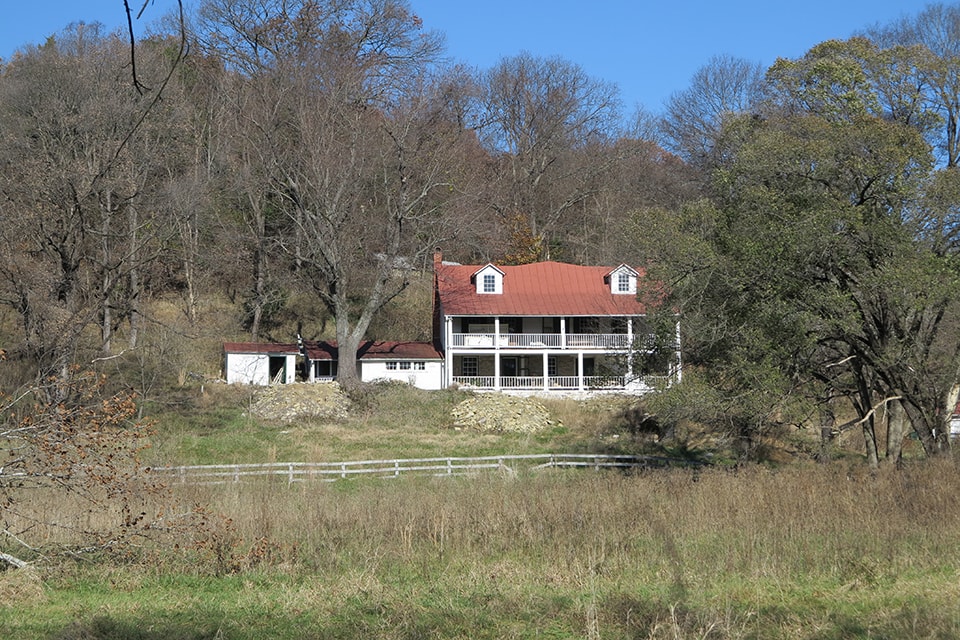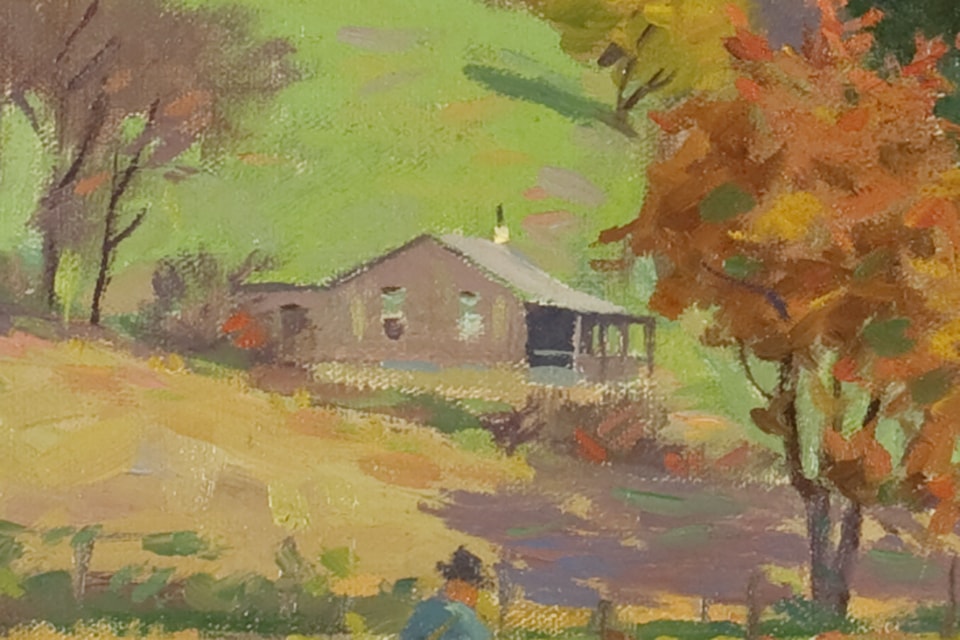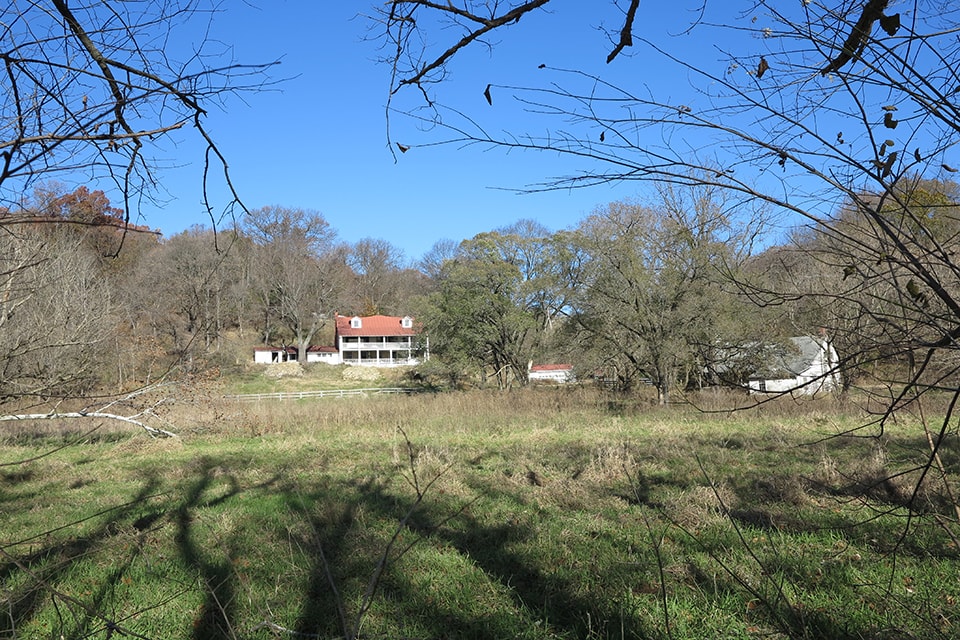Fall in the Shenandoah Valley means one thing: color. The leaves on the many oaks, maples, dogwoods, and other native trees begin to fade from deep green to brilliant hues of red, orange, and yellow.
By Curator of Collections Nick Powers
Each year, thousands of people from across the country and even around the world make pilgrimages to the Valley to take in the sights. They observe the foliage from the cliff sides at the top of Maryland Heights in Harpers Ferry to the base of the Natural Bridge near Lexington.
Depictions of the Valley at its peak beauty are a central component of the MSV Collection. Several such views are on currently on view in our contemporary art exhibition Art is a Vital Force, including the oil on canvas A Fishing Camp Along the Shenandoah by artist Garnet Jex (American, 1895-1979).
Jex’s painting is awash in fall colors, punctuated by a classic Shenandoah Valley farm on the left-hand side. Clearly the weather wasn’t too cold when Jex began his painting; two fishermen—maybe father and son—are depicted wearing short sleeves as they walk along the dirt road towards a fishing camp marked by a tent and a 1930s or 1940s Ford sedan.
Jex was a native Ohioan, but he moved to the Washington, D.C. area at a young age. He remained in that area for the rest of his life. His earliest artistic training came as a medical illustrator for the Army Medical Corps following World War I. Jex then followed up this position with study at the Corcoran Gallery of Art and Design and bachelor’s and master’s degrees in fine art from The George Washington University. He spent the majority of his career as an artist and designer for the United States Public Health Service for 26 years, retiring in 1962.
Jex began making painting forays to the Shenandoah Valley in the 1920s. He spent most of his time in the panhandle of West Virginia, specifically painting landscape scenes in Jefferson County. In recent years, Jex’s Valley work has been displayed at the MSV and the Washington County Museum of Fine Arts in Hagerstown, Maryland.
Scholars are often left guessing the precise location an artist chose to depict in their work. Fortunately, that is not the case with A Fishing Camp. In 1967—approximately eight years after finishing the painting—Jex penned a letter to the then-owners describing in detail the scene’s exact spot:
I’ve checked my painting record which shows the picture you won at the Bol was a subject along the Shenandoah a short distance north of State route 9 – the Hillsboro, Va – CharlesTown, W.Va road, with the River just off the right of the canvas through the sycamores that line the shore. Natives fish and camp there.
Jex also very considerately drew a map of the area on the back of the letter, marking the spot with a red “X” just south of Millville, West Virginia.
In today’s terms, Jex chose a spot on a bend in the road just north of where State Routes 9 and 27 merge. Moulton Park—on the banks of the Shenandoah and open to the public—is just a stone’s throw away.
Very little has changed today from what Jex captured nearly 60 years ago, except perhaps that the sycamore trees are a bit taller. Still cresting the hill is Hopewell Mills (also called Hopewell Farm), first built by the William Little Sr. family around 1765. Later owners added onto the house in the twentieth century, but it is still clearly distinguishable by its double-tiered porch.
Just below the main house is a small cabin—known locally as the “Viand Cottage” —painted white instead of the brown that appears in Jex’s painting. The relationship of the two buildings is not quite as Jex drafted it; perhaps he thought the composition was stronger with the smaller building more closely settled into the foreground.
A large part of the charm of Jex’s Shenandoah Valley work was his ability to depict everyday life in the region. That is still echoed in many ways today. Over both days I travelled to take photographs for this post, locals were fishing almost exactly where the camp appears between the two sycamore trees. One gentleman told me he had been fishing in that spot for more years than he could remember! Maybe he or someone he knew was the young man travelling up the road to the fishing camp. Unfortunately, I did not think to ask. But be sure, if I ever see him again, I will certainly find out!
